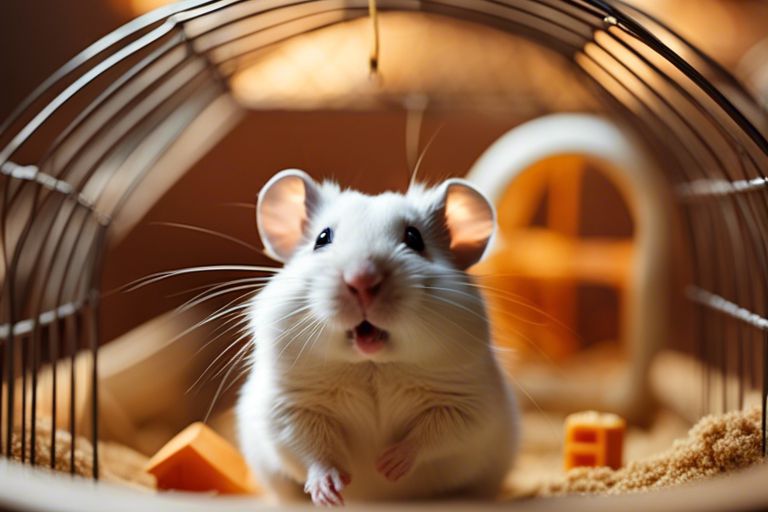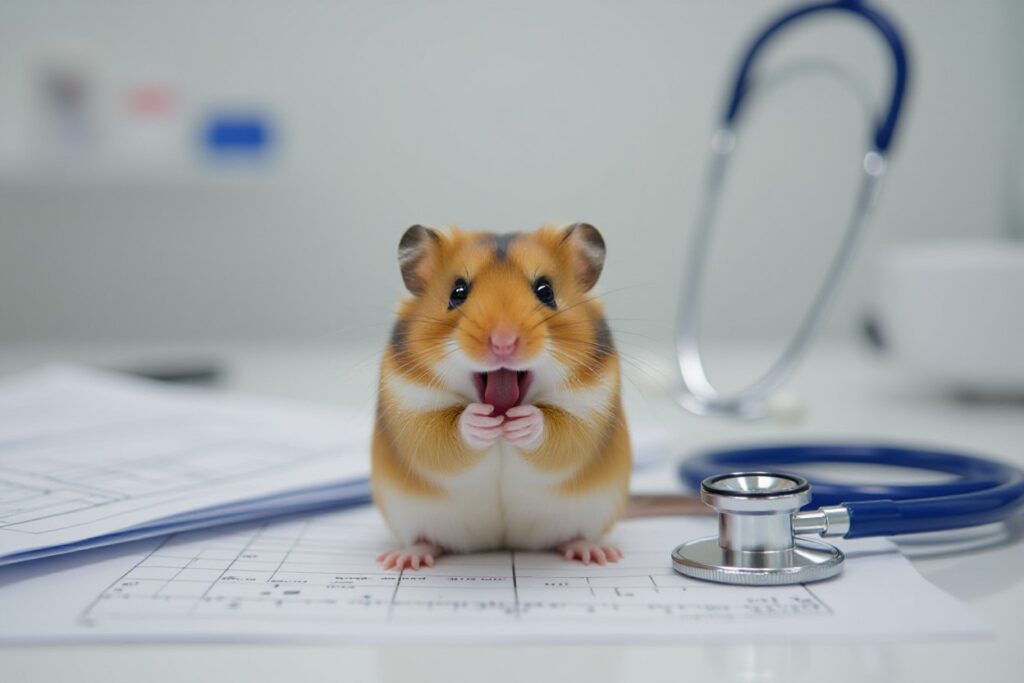It’s important to ensure that your hamster has a safe and stimulating environment to thrive in. Just like any other pet, hamsters have specific needs that must be met to keep them healthy and happy. By providing the right habitat, enrichment activities, and proper care, you can create a space where your furry friend can flourish. Let’s explore some key tips and guidelines to help you create the ideal living space for your hamster.
Designing Your Hamster’s Habitat
Choosing the Right Cage
Habitat
When designing your hamster’s habitat, the most crucial element is choosing the right cage. Opt for a cage that is spacious, well-ventilated, and escape-proof. Wire cages with solid bottoms are ideal, as they provide good air circulation and prevent your hamster from escaping.
Placement and Temperature Control
Designing
When setting up your hamster’s habitat, consider the placement and temperature control to ensure a comfortable environment for your furry friend. Place the cage in a quiet area away from direct sunlight and drafts. Maintain a temperature between 65-75°F (18-24°C) to keep your hamster cozy and stress-free.
For instance
| Placement | Temperature Control |
| Choose a quiet area away from direct sunlight and drafts. | Maintain a temperature between 65-75°F (18-24°C). |
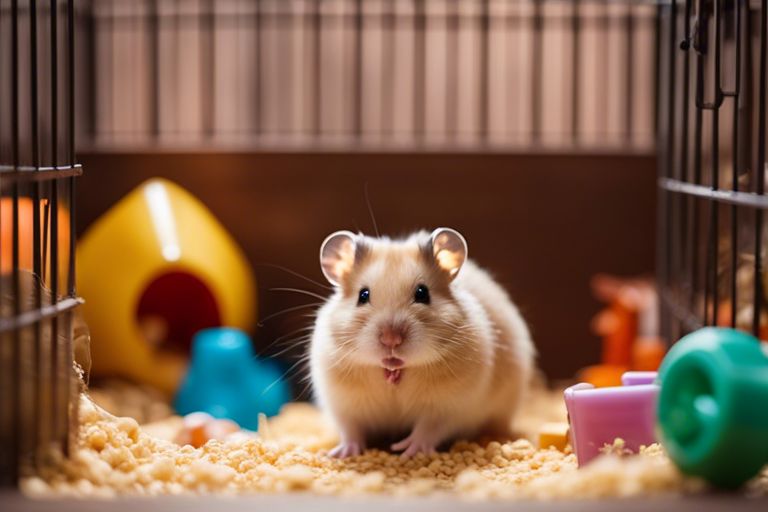
Essential Accessories for Stimulation
Exercise Wheels and Balls
To ensure your hamster gets enough physical activity, providing an exercise wheel or ball is necessary. These accessories allow your hamster to get the necessary exercise to stay healthy and happy. Choose a wheel that is solid-surfaced to prevent any potential injuries to your furry friend’s feet.
Tunnels, Hides, and Climbing Structures
Essential for providing mental stimulation and a sense of security, tunnels, hides, and climbing structures are a must-have in your hamster’s habitat. These accessories cater to your hamster’s natural instincts to burrow, hide, and climb. Make sure to provide a variety of textures and sizes to keep things interesting for your hamster.
It is important to regularly rotate and change the layout of these accessories in your hamster’s habitat to prevent boredom and encourage exploration. This will also help to mimic their natural habitat in the wild, providing a stimulating and enriching environment for your pet.
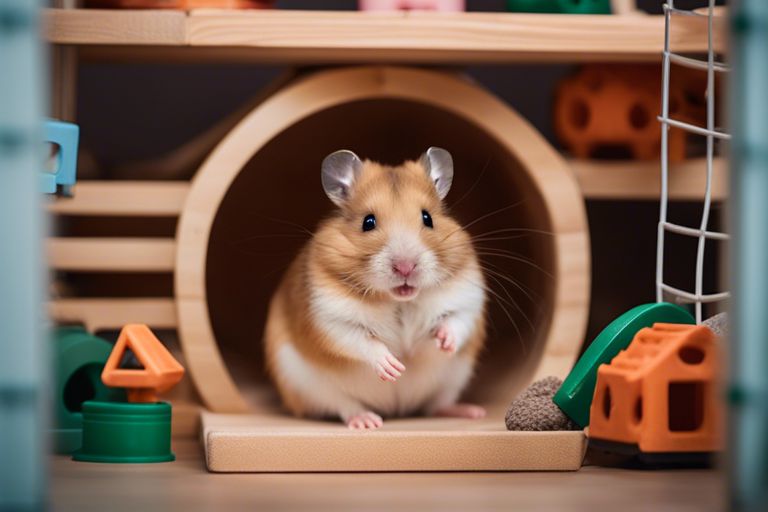
Maintaining a Clean and Safe Environment
Regular Cleaning Routines
For proper maintenance of your hamster’s environment, it is important to establish regular cleaning routines. This includes daily spot-cleaning of soiled areas such as the toilet corner, and a thorough cleaning of the entire cage at least once a week. Ensuring that your hamster’s living space is clean will help prevent the build-up of bacteria and keep your pet healthy and happy.
Safe Bedding and Substrate Options
Any hamster owner knows the importance of choosing safe bedding and substrate options for their furry friend. Opt for bedding materials that are non-toxic, dust-free, and free from any harmful chemicals. Aspen shavings, paper-based bedding, or hemp bedding are all great choices that provide a comfortable and safe environment for your hamster.
Cleaning the cage regularly, along with providing safe bedding options, is crucial for maintaining a clean and healthy environment for your hamster. Remember to spot-clean daily and do a thorough clean-up weekly to ensure your pet’s well-being. By prioritizing cleanliness and safety, you are creating a happy and stimulating environment for your hamster to thrive in.
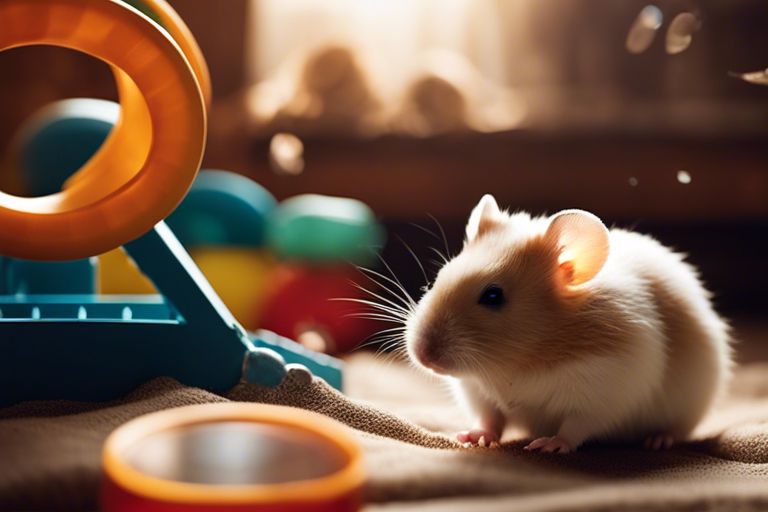
Nutrition and Health
Diet Essentials for Hamsters
Health is paramount when considering the diet of your hamster. These small creatures have specific dietary needs that must be met to ensure their well-being. A balanced diet for a hamster includes a mix of commercial hamster food, fresh vegetables, and the occasional treat. It is important to provide fresh water daily and avoid feeding them sugary or fatty treats excessively.
Recognizing and Preventing Common Health Issues
Issues related to a hamster’s health can arise if their dietary and environmental needs are not met. Common health issues that hamsters may face include dental problems, obesity, and respiratory infections. It is crucial to observe your hamster regularly for any signs of illness, such as changes in eating habits, excessive itching, or lethargy. Providing a clean and stimulating environment, along with a well-balanced diet, can help prevent these health issues.
Interaction and Social Needs
Handling Your Hamster
Despite their small size, hamsters have delicate bodies that can be easily injured if not handled correctly. An important aspect of interacting with your hamster is to approach them gently and avoid sudden movements. When picking up your hamster, support their entire body with both hands to prevent any harm. Remember to be patient and allow your hamster to get comfortable with you before attempting to handle them.
The Role of Play and Exploration
One of the keys to keeping your hamster happy and healthy is to provide opportunities for play and exploration. An enriched environment with toys, tunnels, and exercise wheels can stimulate your hamster’s natural instinct to explore and stay active. Hamsters are curious creatures that enjoy digging, climbing, and running, so it’s necessary to offer a variety of toys and activities to keep them engaged.
Hamsters thrive in environments that offer plenty of mental and physical stimulation. By providing a range of toys and activities, you can help satisfy your hamster’s natural behaviors and keep them mentally sharp and physically fit. Regular interaction with your hamster through playtime and handling can also strengthen the bond between you and your pet.
To wrap up
On the whole, creating a safe and stimulating environment for your hamster is crucial for their well-being and happiness. By providing a spacious cage, appropriate bedding, a balanced diet, and various toys and activities, you can ensure that your pet is living in a comfortable and enriching space. Regularly cleaning and maintaining their habitat is also necessary to prevent health issues. Remember to handle your hamster gently and with care to build trust and a strong bond. With proper attention and dedication, you can create a thriving environment for your beloved furry friend to thrive in.
FAQ
Q: Why is it important to create a safe environment for your hamster?
A: Creating a safe environment for your hamster is crucial to ensure its well-being and happiness. A safe environment helps prevent accidents, injuries, and stress for your furry friend.
Q: How can I make my hamster’s cage stimulating?
A: To make your hamster’s cage stimulating, provide plenty of toys, tunnels, and hiding spots. You can also create a maze with various obstacles for your hamster to explore.
Q: What substrate should I use in my hamster’s cage?
A: Opt for a safe and natural substrate such as aspen shavings, paper-based bedding, or coconut fiber. Avoid using cedar or pine shavings as they can be harmful to your hamster’s respiratory system.
Q: Is it necessary to provide a wheel for my hamster?
A: Yes, it is crucial to provide a suitable exercise wheel for your hamster to keep it physically active. Make sure the wheel is the right size and does not have any sharp edges to prevent injuries.
Q: How often should I clean my hamster’s cage?
A: It is recommended to spot clean your hamster’s cage daily and do a thorough cleaning once a week. This includes changing the bedding, washing the accessories, and sanitizing the cage to maintain a clean and healthy environment for your hamster.
